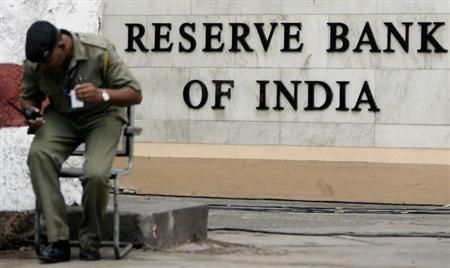
'Any sharp slowdown in China, the movement of the US dollar and the market’s reaction to any rate hike by the US Fed would have an impact on global sentiments towards equity.'
In the next few weeks, analysts will eye the outcome of the Reserve Bank of India’s monetary policy review, the possibility of a rate increase by the US Federal Reserve and chances of Britain exiting the European Union.
Anoop Bhaskar, below, left, head of equities and fund management at IDFC Asset Management, tells Puneet Wadhwa that although interest rate cuts by RBI might be close to the bottom, the banking regulator’s official stance to improve liquidity should help banks lower their rate on loans.
Excerpts:
What is the road ahead for the markets in the remaining half of calendar year 2016? What are the key risks and the factors that can trigger an upside from here on?
The market movement will be largely driven by earnings growth.
Historically, there have been three instances of markets trading at similar valuations and in each of these three periods, three-year forward Nifty returns have reflected a close correlation to earnings growth.
Hence, the key risk to the market is a delay in earnings growth in the domestic context.
From a global perspective, any sharp slowdown in China, the movement of the US dollar and the market’s reaction to any rate hike by the US Fed would have an impact on global sentiments towards equity.
How do valuations appear at this stage?
Valuations are neither rich nor cheap.
The Nifty 50 price-to-earnings range is approximately one standard deviation of its 10-year average (above two could be construed a bubble). Hence, the market has been focused on earnings growth.
Pockets of growth have been amply rewarded by investors across market cap segments -- small-cap; mid-cap or large-cap.
This has raised concerns over the valuation of ‘quality and growth’ stocks.
What are your key takeaways from the March quarter results?
Corporate results for the March 2016 quarter have shown a recovery from March 2015 levels, although these are still lower than the March 2014 levels.
Growth in profit after tax at 10 per cent has doubled from March 15 levels, though still lower than the March 2014 levels.
While the 15-year earnings growth of the Nifty 50 is in the range of 14-15 per cent, the compounded annual growth rate since March 2013 has been 13 per cent lower than the longer-term trajectory of earnings growth.
Segment-wise, the automobile sector reported the strongest profit growth. Public sector banks have reported higher losses than expected.
 What has been your investing strategy thus far in 2016?
What has been your investing strategy thus far in 2016?
Our investment strategy for IDFC Classic Equity Fund is focused on buying 'quality and value' -- a segment of the market ignored by the market -- as the quarterly earnings growth in this segment were weak.
Our belief on investing in companies that have above average historical performance but near-term performance challenges allows us to build a portfolio of companies with valuations much lower than 'quality and growth' portfolio.
With initial signs of an economic recovery, and hopes of an earnings recovery from the third quarter of FY17, this segment should get the twin benefit of earnings revival with possible P/E re-rating.
Which sectors are you overweight and underweight on?
We are currently overweight on automobile and cement sectors; we are constructive on power generation.
A cyclical uptrend in the domestic economy is a key thought process at this stage.
In the early stage of a cyclical recovery, consumer-discretionary segments such as auto and cement would reflect this upswing in growth.
Acceptance of the UDAY scheme and ample coal supply should boost power generation, while the per unit profitability would be lower than peak levels a few years ago and higher plant load factor (greater buying power with state electricity boards) should boost profits.
Among the sectors we are underweight on are metals and capital goods.
The former due to global overcapacity and strong supply, while the latter could still remain impacted by slower corporate investment cycle.
Given the fall from highs, has the faith of retail investors – as evident from flows into equity schemes -- been shaken?
While equity flows have reduced from the higher levels of last year, investor interest in equities remains high.
This is primarily driven by the even lower returns from real estate, the erstwhile favourite of most investors.
Also, the perception that improving economic growth is best played through equity remains a theme which investors continue to have faith in.
How many more rate cuts do you expect in 2016 from RBI, given the evolving global and domestic events?
The view is that interest rate cuts by Reserve Bank of India could be close to the bottom.
However, RBI’s official stance to improve liquidity should help banks lower their rate on loans, or maintain the current levels for an extended period is equally important.












 © 2025
© 2025